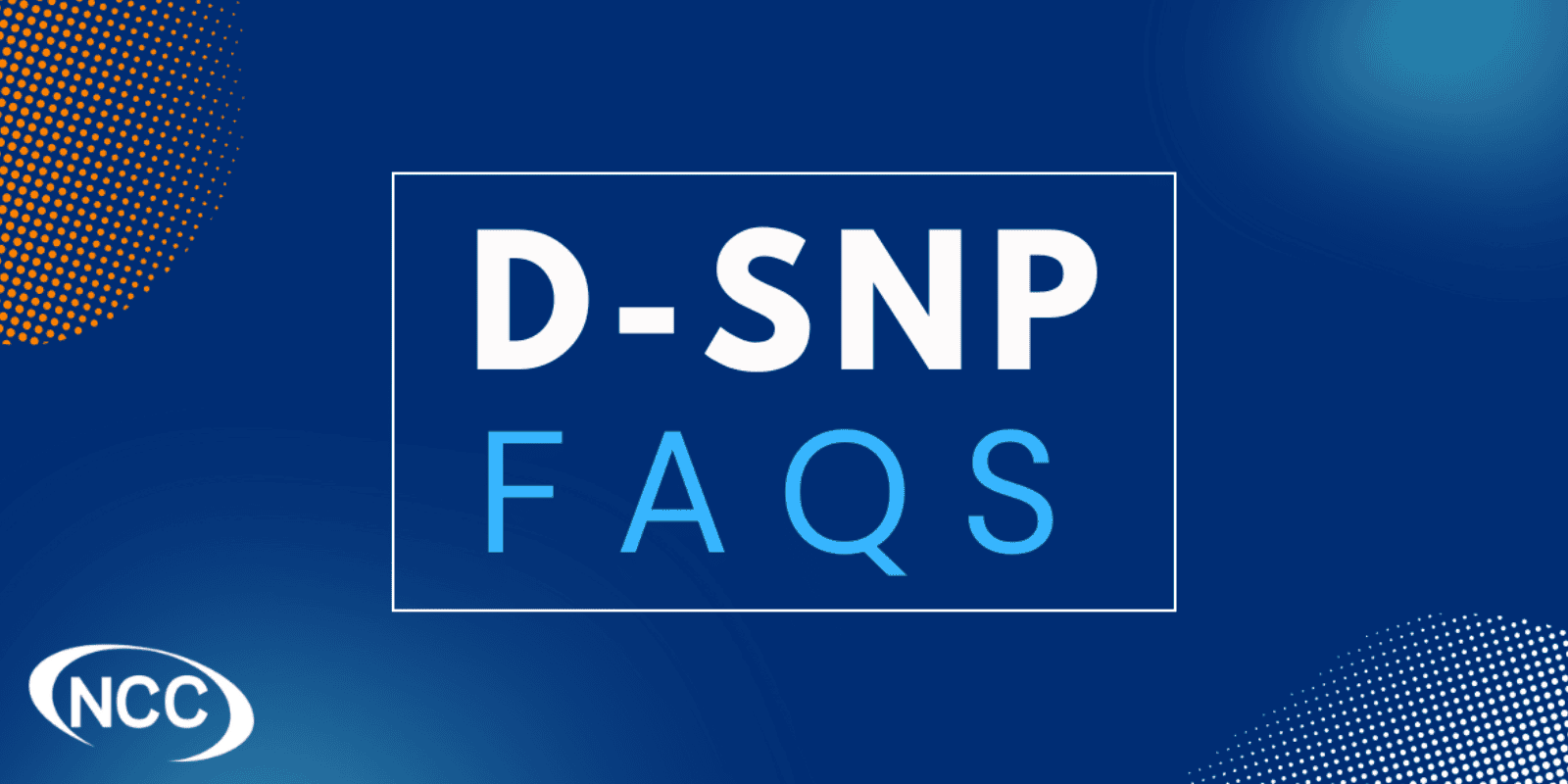
Find answers to all of your questions about Dual Eligible Special Needs Plans (D-SNPs). Learn what these plans cover, who’s qualified, where to find clients, and how to help them enroll.
For even more details, check out our Guide to Selling D-SNPs.
What is a Medicare D-SNP?
A D-SNP is a Dual Special Needs Plan for people who meet one of the following criteria:
- On both Medicare and Medicaid.
- Qualified Medicare Beneficiaries (QMB).
- In some cases, a Specified Low-income Medicare Beneficiary (SLMB) may qualify for a D-SNP.
These plans have lots of added benefits outside of what Original Medicare covers to help keep their clients healthy.
The most common way to qualify for a D-SNP is to be eligible for both Medicare and Medicaid.
To qualify for Medicare, you need to be:
- At least 65 years old, or under 65 and qualify based on disability or other special situations.
- A U.S. citizen or a legal resident who has lived in the U.S. for at least 5 years in a row.
To qualify for state Medicaid benefits, you need to be:
- Under age 65 and meet the requirements for low-income families, pregnant women and children, individuals receiving Supplemental Security Income (SSI), disability or other special situation.
You may also qualify for a D-SNP if you are at least 65 years old and you either:
- Receive Extra Help or assistance from your state.
- Are blind or have a disability, but do not need long-term care.
A good candidate for a D-SNP meets the eligibility requirements for both Medicare and Medicaid.
Those over 65 who are not on Medicaid but receive Extra Help or state assistance are also good D-SNP candidates.
A PPO D-SNP – although hard to find – is a D-SNP plan based on a preferred provider organization network. These plans allow more flexibility than an HMO and don’t typically require referrals.
You’ll find a full description of how to target and sell D-SNPs in our Guide to Selling D-SNPs. Here’s an excerpt:
Targeting by Income
If you want to generate D-SNP leads with business reply cards (BRCs), you will need to change your approach a bit if you are currently mailing to other groups. The most important change to make is the income brackets you are mailing to.
There are different income eligibility requirements for different D-SNP categories. To get the best returns, you should mail to incomes around $15,000 or below to target Medicaid beneficiaries.
Targeting by Age – Not Just 65+
Most Medicare agents are busy buying T65 lists, but 40% of dual eligibles are under 65. That works out to 4.8 million people that your competitors are missing by only targeting 65+. You can market to this group with targeted lead mailers, or you can use social media (namely Facebook) to target a group with a specific area, age range, and interests.
Yes, D-SNPs are network-based. HMO networks are most common, but PPO D-SNPs are available in certain areas.
An HMO D-SNP is a plan that’s based on a Health Maintenance Organization network. These plans typically require referrals to see specialists.
D-SNPs are for those on Medicare and Medicaid regardless of health issues. C-SNPs, or Chronic Condition Special Needs Plans, are for those on Medicare who have certain chronic conditions such as heart-related problems, diabetes, or even lung issues. C-SNP plans are specific to the illness, which is defined within each plan.
D-SNPs can accept clients outside of those on Medicare and Medicaid – a Qualified Medicare Beneficiary, for example. An MMP will only take those that are on both Medicare and Medicaid.
CMS also notes that MMPs are only allowed to operate in select counties within states that have completed a three-step CMS approval process culminating in a three-way contract between CMS, the state, and the MMP provider.
Although the majority of states have D-SNP plans available, these plans may not be available in all counties within a state. Client enrollment into a DSNP plan is based on the county they live in within their resident state.
Yes, all D-SNPs include drug coverage.
D-SNPs cover everything original Medicare covers, plus additional benefits.The benefits vary by program but may include:
- Transportation to and from doctor appointments.
- Fitness programs.
- Dental.
- Vision.
- Hearing.
- Prescription drug coverage.
- Long-term care.
- Medication therapy management.
- Behavioral health services.
- End-of-life support services.
- Social work support.
- Meal programs.
- Over-the-counter allowance.
- Chiropractic.
- Acupuncture.
- Podiatry.
Medicaid application options may include paper applications, online application submissions, and even in-person applications at the local State Medical Assistance (Medicaid) office. Agents can help clients apply for Medicaid by visiting www.medicare.gov to get the telephone number for the local Medicaid office.
To qualify for a D-SNP, a person enrolls in Medicare and applies for Medicaid separately. Once they are eligible, an agent should assist with enrollment.
Dual eligibles can enroll and/or switch D-SNP plans during AEP. In addition, as of January 1, 2019, CMS now allows beneficiaries to use the Special Election Period (SEP) for dual eligible and LIS individuals once per calendar quarter for the first 3 quarters of the year:
- 1st Quarter – January to March
- 2nd Quarter – April to June
- 3rd Quarter – July to September
- AEP – October 15 to December 7
The quarterly usage is based on the application date, not the effective date.
Example: An application is submitted on June 23, which is the 2nd quarter. It becomes effective July 1, which is the 3rd quarter. That application would use the SEP for the 2nd quarter. The client could still make a change during the 3rd quarter.
There are asset limits for each category of eligibility. Financial assets include things such as savings and checking accounts, stocks, bonds, mutual funds, retirement accounts, and real estate. Check your local laws, but in most states, there are certain resources that aren’t counted as assets. These include:
- Your primary residence.
- One car.
- Household goods and wedding/engagement rings.
Burial spaces. - Burial funds up to $1,500 per person.
- Life insurance with a cash value of less than $1,500.
There are great ways to target the D-SNP market with mailers, but the most cost-effective way to generate D-SNP leads is through grassroots marketing. Some places to consider visiting are food pantries, soup kitchens, thrift stores, flea markets, churches, senior centers, and low-income housing communities.
Spend time volunteering, getting to know the management staff, and having conversations with anyone you meet at these spots. The best results will come when you visit these places regularly and don’t try to actively seek out prospects. People will find out and ask what you do, and lead generation will happen organically. Don’t try to be pushy. Educate and follow up.
Don't See Your Question? Ask here!
Send us your question and we will answer it as soon as possible.

